En búsqueda de la Energía Oscura con Euclid y experimentos cosmológicos de cuarta generación
Santiago Casas
Postdoctoral Researcher
TTK, RWTH Aachen University





La Vía Láctea
http://www.esa.int/Science_Exploration/Space_Science

El Universo Local
Laniakea: https://projets.ip2i.in2p3.fr//cosmicflows/
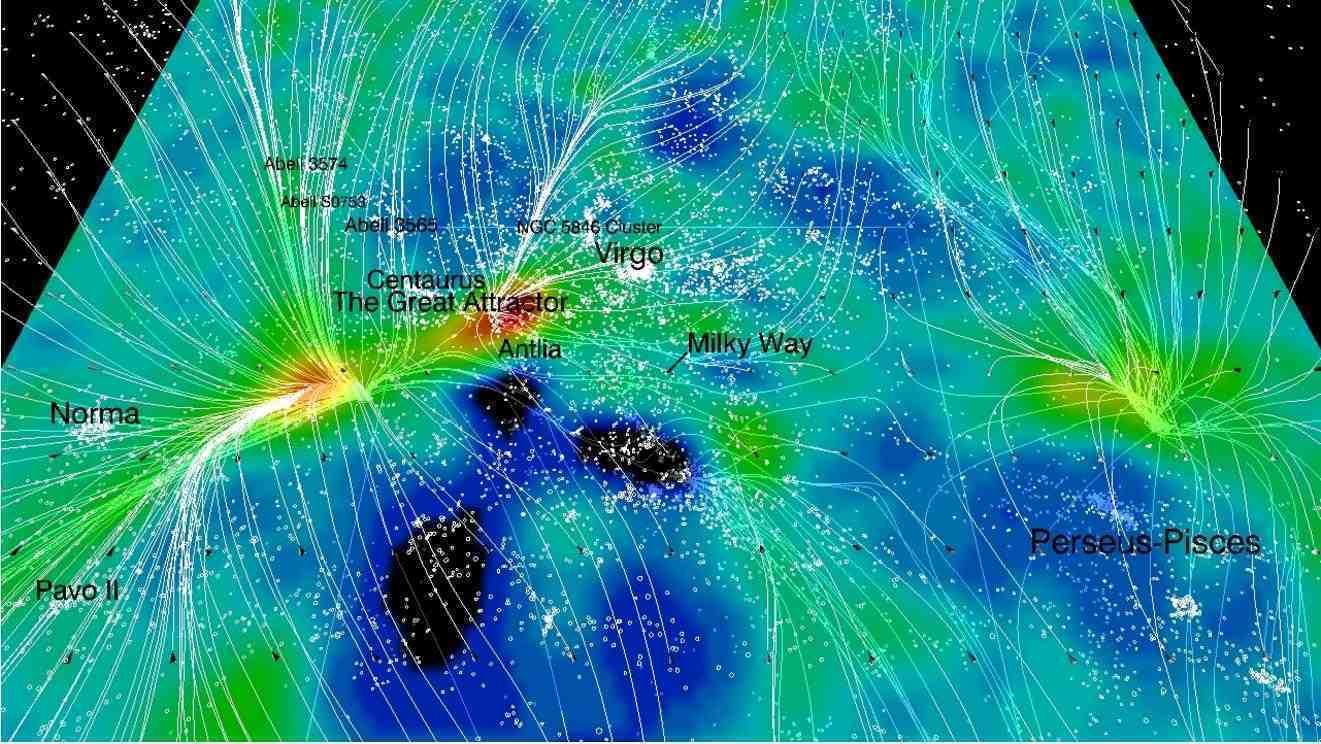
La red cósmica
Millenium Simulation: https://wwwmpa.mpa-garching.mpg.de/


Grandes estructuras del Universo
Illustris Simulation: www.nature.com/articles/nature13316

Radiación Cósmica de Fondo de Microondas (CMB)
Planck 2018 CMB Temperature map (Commander) . wiki.cosmos.esa.int/planck-legacy-archive/index.php/CMB_maps
Radiación Cósmica de Fondo de Microondas (CMB)
Planck 2018 CMB Dust polarization map . wiki.cosmos.esa.int/planck-legacy-archive/index.php/CMB_maps

La Historia de Expansión del Universo

- Inflation
- Baryo/Leptogenesis
- Recombination
- Neutral Hydrogen
- Dark Matter structures
- Galaxies
- Accelerated expansion
La Historia de Expansión del Universo
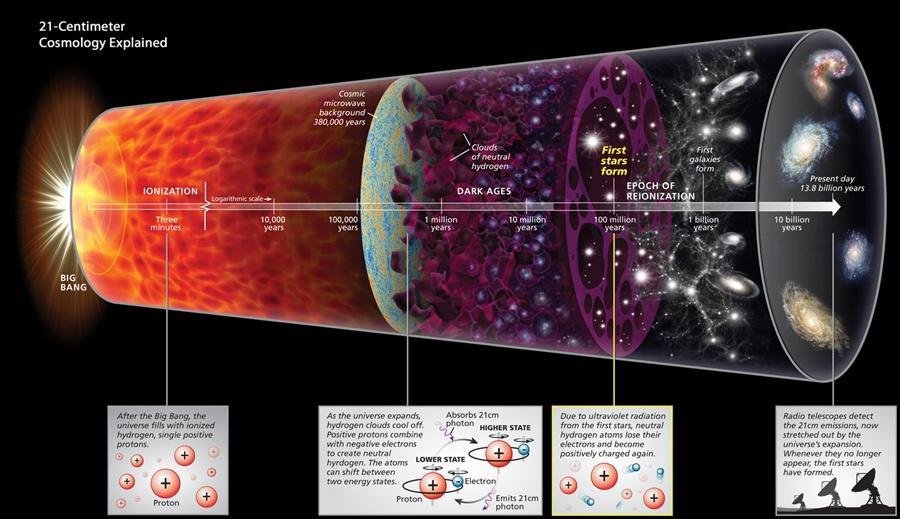
La composición del Universo
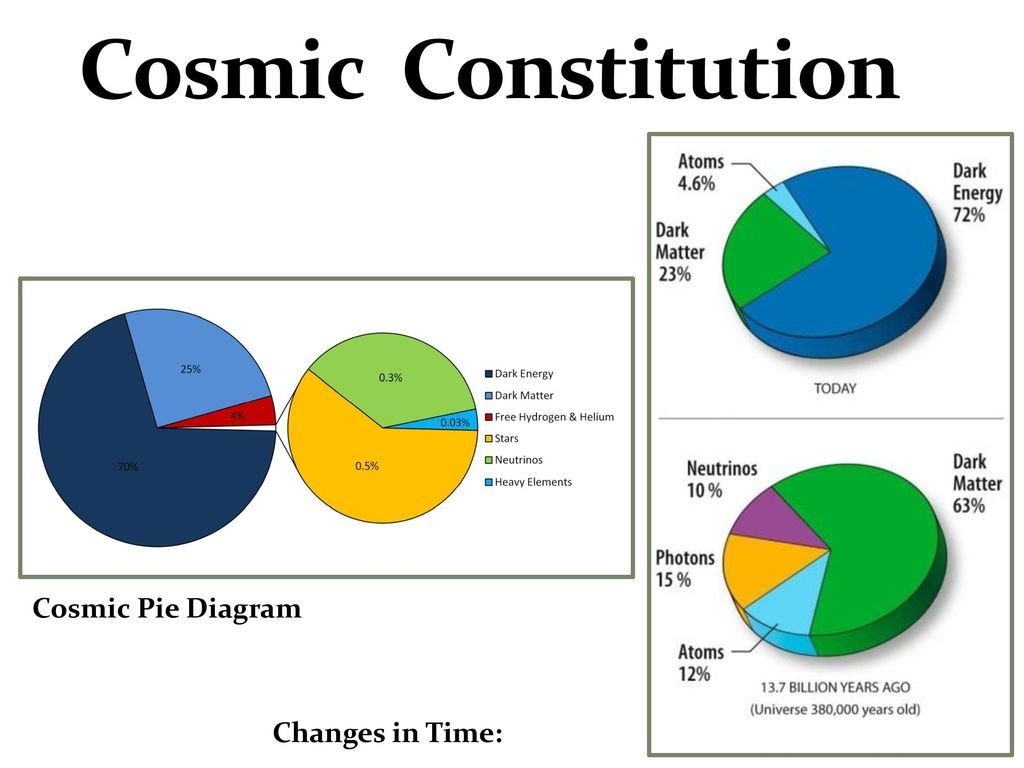
El Modelo Estándar: \(\Lambda\)CDM


Ecuación de campo de Einstein
Supernovas 1998, Premio Nobel 2011
Relatividad General y
condiciones iniciales cuánticas

Concordancia de observaciones, CMB (Premio Nobel 2006, COBE)
The Standard \(\Lambda\)CDM model

- \(\Lambda\)CDM is still best fit to observations.
- Predictive model with few free parameters.
Concordance Cosmology:
- Lensing
- CMB
- Clustering
- Supernovae
- Clusters
The Standard \(\Lambda\)CDM model
- \(\Lambda\)CDM is still best fit to observations.
- Some questions remain:
- \(\Lambda\) and CDM.
- Cosmological Constant Problem:

Quantum Gravity?
O(100) orders of magnitude wrong
(Zeldovich 1967, Weinberg 1989, Martin 2012).
Composed of naturalness and coincidence
sub-problems, among others.

String Theory Landscape?
Cómo Sabemos Todo Esto?
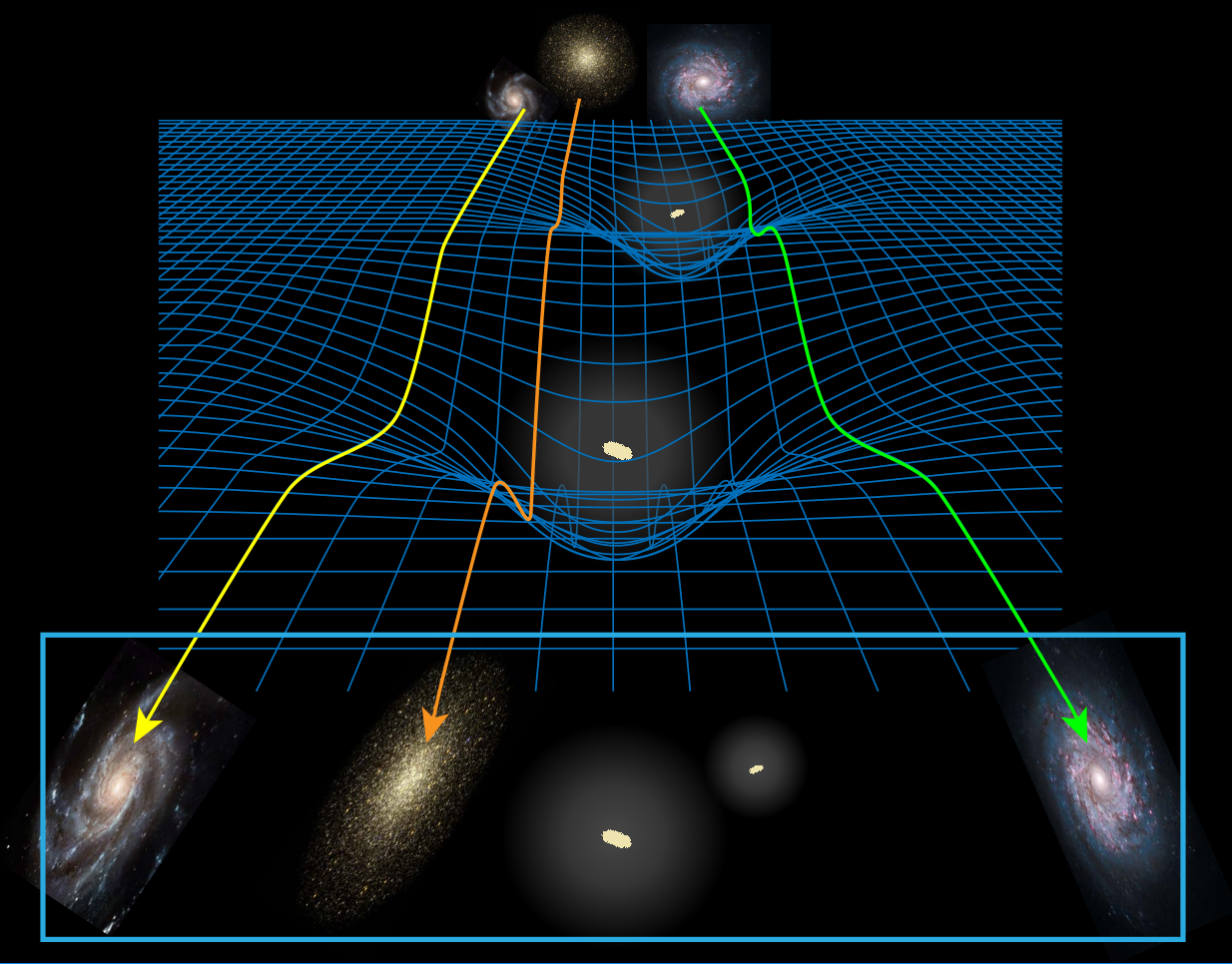
1. Lentes Gravitacionales
Cómo Sabemos Todo Esto?
2. Radiación Cósmica de Fondo

Satélite Planck de la ESA

Datos y teoría calzan
Cómo Sabemos Todo Esto?
3. Galaxy Clustering


Efectos de la gravedad sobre el espacio tiempo
Funciones de correlación
Tensiones en \(\Lambda\)CDM

H0 tension at 5\(\sigma\)


Clustering amplitude \(\sigma8\)
- \(\sigma_8\) - \(\Omega_m\) discrepancy at ~\(2\sigma\)
- Tension between late and early-time Universe
- Tension in clustering amplitude and matter content
Neutrinos Masivos en Cosmologia

Neutrinos Masivos en Cosmologia


- Neutrinos and Photons initially at thermal equilibrium
- Neutrinos decouple at \(\approx\) 1MeV
- Energy injection into photons from \(e^+ e^- \) annihilation
Neutrinos Masivos en Cosmologia





Froustey et al, arXiv:2008.01074, arXiv: 2110.11296
- If neutrinos are massless: relativistic, dilute as \(a^{-4}\)
- If massive: non-relativistic, one has to follow the Friedmann function evolution
Perturbaciones Lineales


The power spectrum is calculated from the linear density perturbations solving the Vlasov-Poisson system
Perturbaciones Lineales


Vlasov-Poisson system is a set of diff.eqn. in which all matter-radiation species are coupled
Slides by: Dennis Linde
Neutrinos masivos: Free streaming


- Neutrinos free stream below a scale of k_FS.
- They do not cluster below that scale.
- Suppression of the power spectrum.
- The non-relativistic transition imposes a minimum in k_FS
- Cosmology-dependent

Neutrinos masivos: Free streaming



Suppression of the power spectrum, at first order depends on energy density ratios
Neutrinos masivos: Free streaming


CMB angular spectrum and matter power spectrum are both dependent on neutrino mass, N_eff and ordering
Euclid Space Satellite

Euclid Space Satellite

- Two instruments:
- VIS (visible photometer): shape and orientation of 1.5 billion galaxies!
- NISP (near infrared spectrograph): 30 million galaxy spectra!



- 15 000 square degrees in the sky
- 16 countries, ~1500 members
- ~170 Petabyte of data!
Credits: Rodlophe Cledassou, CNES
Euclid Space Satellite

Localizado en el punto de Lagrange L2
Credits: Rodlophe Cledassou, CNES
VIS

Instrumento VIS:
- Medirá 1000 millones de galaxias en el espectro visible e infrarrojo.
- Con esto podemos medir los débiles lentes gravitacionales.
Credits: Rodlophe Cledassou, CNES
NISP: Near-Infrarred Spectrograph
Instrumento NISP:
- Medirá 100 millones de espectros de galaxias en el espectro infrarrojo.
- Con esto podemos medir las distancias y velocidades de las galaxias.
- Crear mapa 3D del Universo.

Credits: Rodolphe Cledassou, CNES
Euclid Mask

15,000 square degrees
Credits: Tobias Liaudat, CosmoStat
Euclid Shape Pipeline

Credits: Rodlophe Cledassou, CNES
Euclid

https://www.esa.int/ESA/Our_Missions
Otros satélites de la ESA

Lentes Gravitacionales

Galaxy Clustering


BAO
Clustering
RSD

Spec-z
Euclid Collaboration, IST:Forecasts, arXiv: 1910.09273
Galaxy Clustering

Slides by: Dennis Linde
Galaxy Clustering
Angulo et al, 1406.4143

The Matter Power Spectrum

Current data:
Image: https://www.cosmos.esa.int/web/planck/picture-gallery
The Matter Power Spectrum
Euclid:

Scales from: ~ \(10^{-3}\) to \(10\) hMpc\(^{-1}\)
Euclid: IST:Forecasts

Awardees of the Euclid STAR Prize Team 2019
Euclid preparation: VII. Forecast validation for Euclid cosmological probes. arXiv:1910.09273
Euclid: IST:Forecasts
Euclid preparation: VII. Forecast validation for Euclid cosmological probes. arXiv:1910.09273

Fisher Matrix Forecasts
Euclid preparation: VII. Forecast validation for Euclid cosmological probes. arXiv:1910.09273

Bayes Theorem:
Probability of the model parameters given the data

Fisher Information Matrix:
Curvature (Hessian) of the Likelihood
Gaussian Likelihood in data space:
Fisher Matrix Forecasts
Euclid preparation: VII. Forecast validation for Euclid cosmological probes. arXiv:1910.09273
Fisher Matrix for a Gaussian likelihood:

Parameter covariance:

Defines an ellipse:


MCMC Forecasts
Euclid IST:L and IST:NL in preparation

- Define Likelihood pipeline in real and redshift space
- Run Markov-Chain-Monte-Carlo sampling parameter space and probability
- Plot probability density contours
- Deviations from Gaussian due to non-linear dependencies in the posterior
Neutrino constraints from Planck



Neutrino forecasts for Euclid

Plots by: Sabarish Sabarish Venkataramani
Euclid Full:
GC spectro + 3x2pt photo
Code: CosmicFish
S.Casas and M.Martinelli
CosmicFish Code

Code: CosmicFish
S.Casas, M.Martinelli and M.Raveri
Soon to be released: New full pythonic version
Gravedad Modificada y Energia Oscura
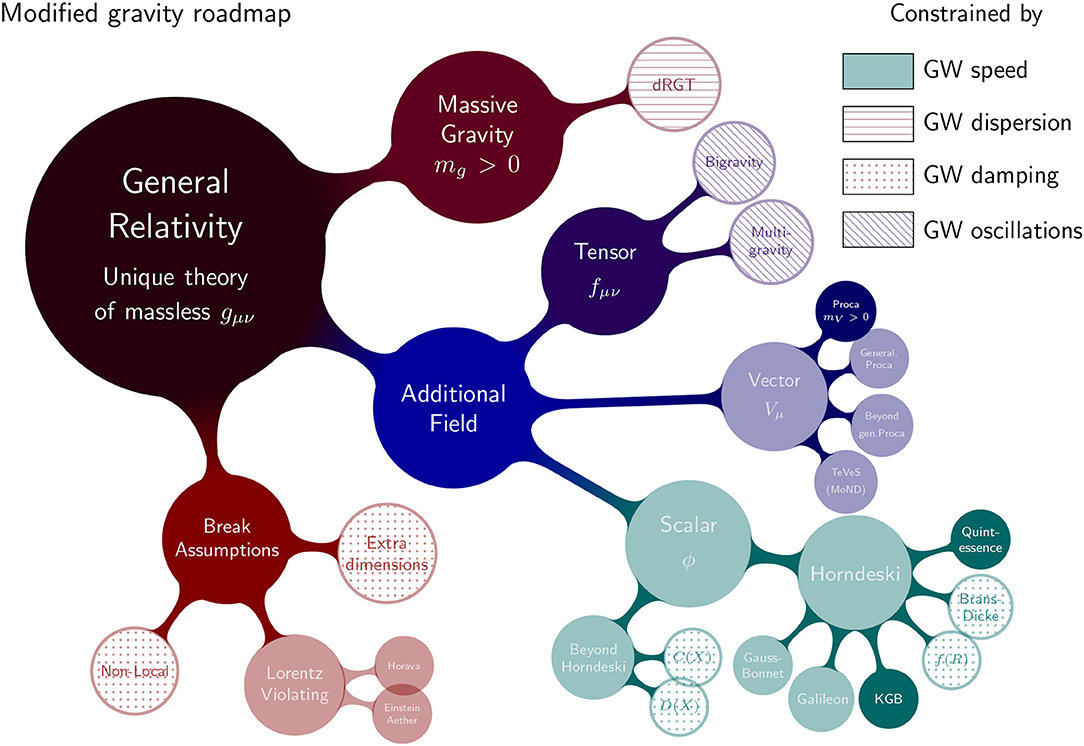
Ezquiaga, Zumalacárregui, Front. Astron. Space Sci., 2018
Gravedad Modificada y Energia Oscura

Parametrized modified gravity

In \(\Lambda\)CDM the two linear gravitational potentials \(\Psi\) and \(\Phi\) are equal to each other
We can describe general modifications of gravity (of the metric) at the linear level with 2 functions of scale (\(k\)) and time (\(a\))
Only two independent functions!
Vera Rubin LSST
- Located in Chile, 8.4m telescope
- 20 billion galaxies
- Redshifts: 0 < z ~< 3
- 18,000 square degrees
- 11 years of observation

Vera Rubin LSST
DESI telescope
- 14 000 square degrees in the sky
- 30 million accurate galaxy spectra
- Redshifts: 0 < z < 2
- Quasars up to z~3.5
- 5 years of observation
- Starting 2021

Vera Rubin LSST
Euclid vs. DESI+Rubin

- Forecasts for Modfied Gravity parametrizations
- Euclid using spectroscopic and photometric probes, is roughly as powerful as Rubin+DESI
Vera Rubin LSST
Text
The Square Kilometer Array Obs. (SKAO)
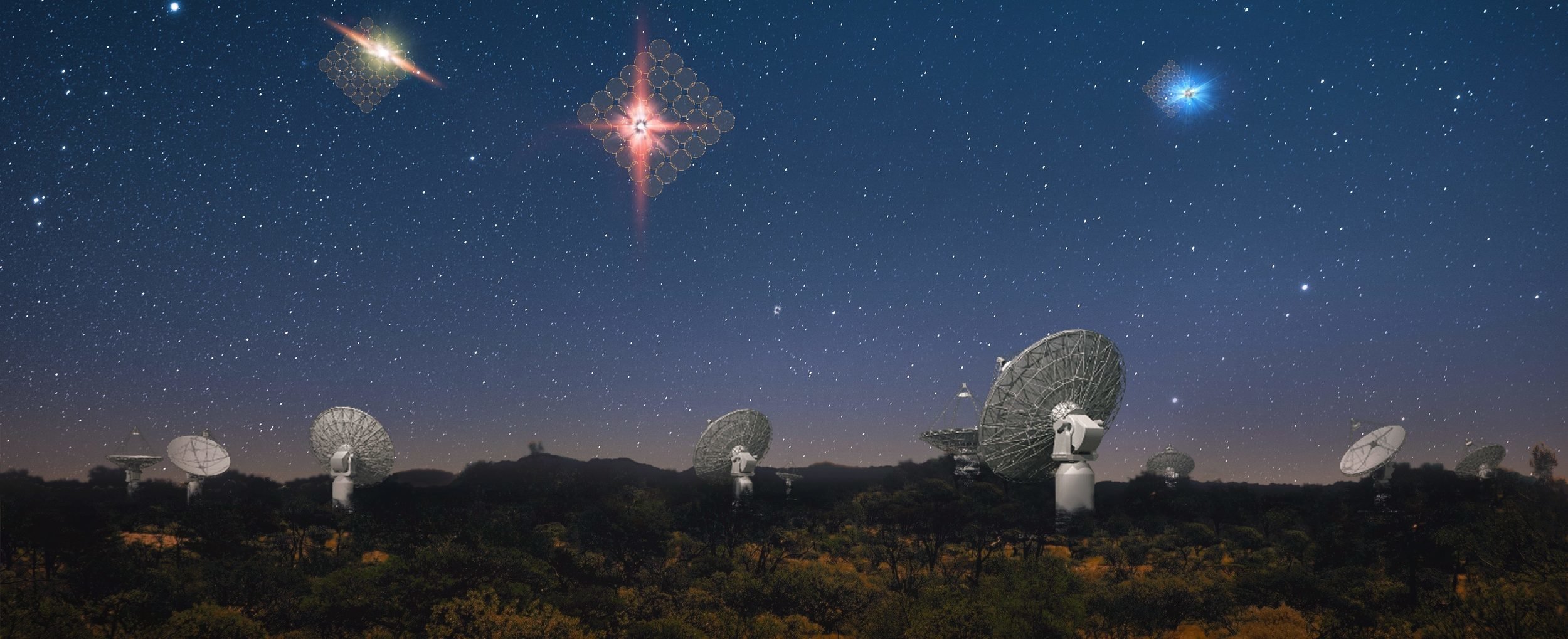
- Next-generation Radioastronomy observatory
- Largest radiotelescope in the world: eventually 1km^2 area.
- 15 countries + partners
- Australia + South Africa installations
- ~2 billion Euros up to 2030.
- 5Tbps data rate and 250 Pflops needed for computation
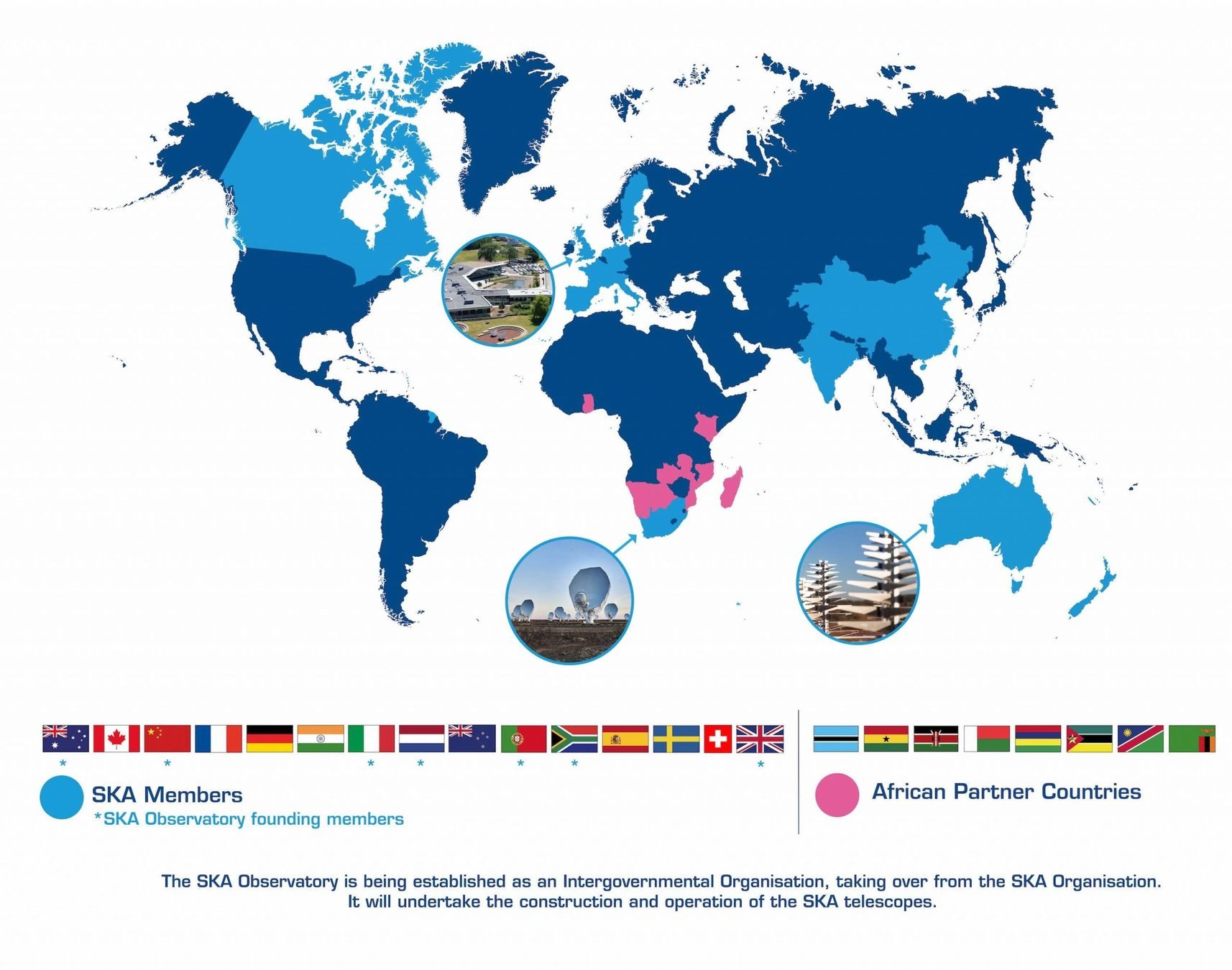

Vera Rubin LSST
Text
The Square Kilometer Array (SKA)
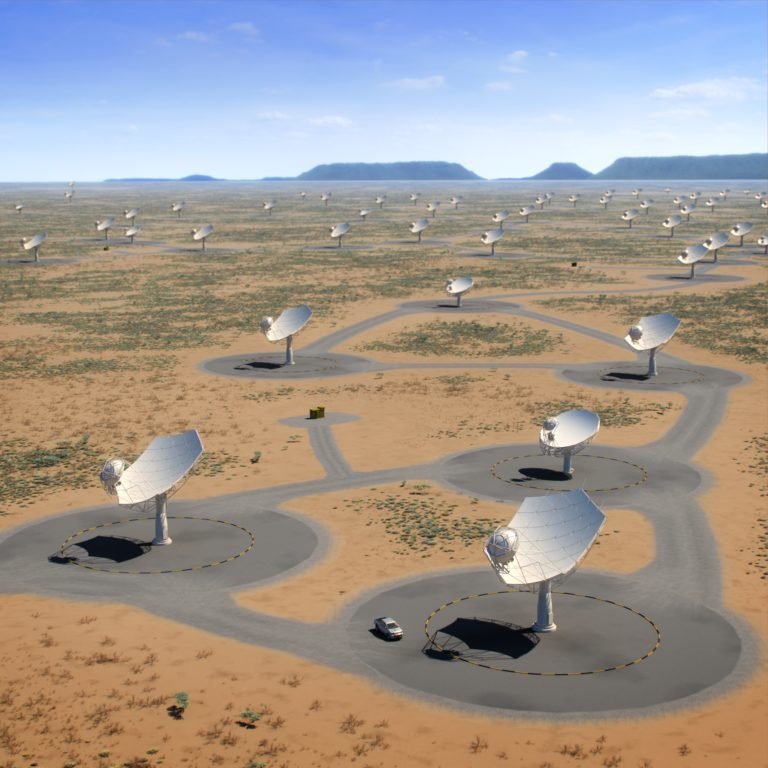
- SKA Phase 1: SKA1-Low and SKA1-Mid
- SKA1-Low: 130,000 dipole antennas, 65km max. baseline
- SKA1-Mid: ~200 dishes of ~15m diameter, max. baseline 150km
- Precursors: ASKAP, MEERKAT, HERA...
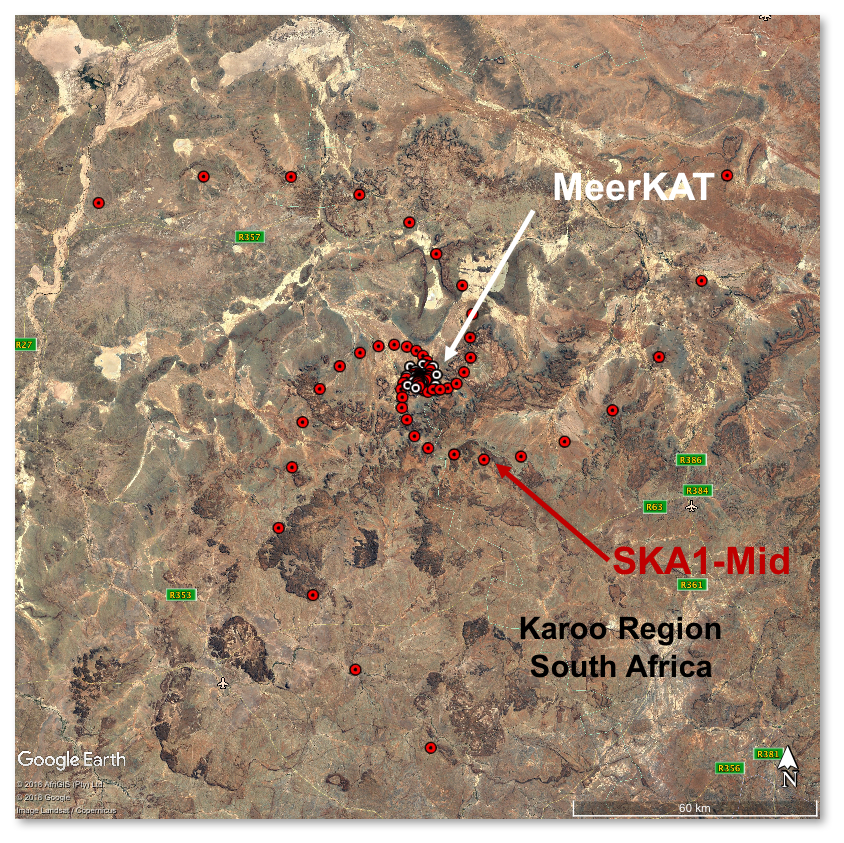

Vera Rubin LSST
Text
The Square Kilometer Array (SKA)
- 15,000-20,000 square degrees in the sky
- Precursors: 10^7, SKA-phase1: 10^8, SKA-phase2: 10^9 galaxies
- SKA1-MID: 0 < z < 3
- SKA1-Low: 3 < z < ~ 20
- Cosmology is just one small area, Exoplanets, Craddle of Life, Reionization, Cosmic Magnetism....

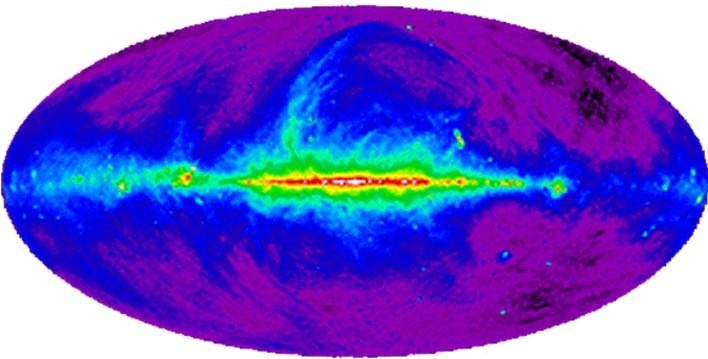
Vera Rubin LSST
Text
The Square Kilometer Array (SKA)
SKA Probes
Image credit: Isabella Carucci
-
Continuum emission: Allows detection of position and shapes of galaxies.
-
Line emission of neutral Hydrogen (HI, 21cm):
-
Using redshifted HI line -> spectroscopic galaxy survey
2. Intensity Mapping: Large scale correlations in HI brightness temperature -> very good redshift resolution,
good probe of structres

Vera Rubin LSST
Text
The Square Kilometer Array (SKA)
SKA Probes
SKA Surveys
- IM: Intensity mapping survey
\(0.4 < z < 2.5\) - Very good redshift resolution: \(\Delta z \approx \mathcal{O}(10^{-3}) \)
- We use: 11 redshift bins
-
Single dish mode:
\(N_d = 197\)
\(t_{obs} = 10000 \, \rm{hr} \)
We limit to the scales
\(0.001 < k < 0.25 \, [h/\rm{Mpc}] \)
SKA1 Medium Deep Band 1: \(20000 \,\rm{deg}^2\)

Vera Rubin LSST
Text
The Square Kilometer Array (SKA)
SKA Probes
SKA Surveys
Galaxy Clustering - IM Synergies
- SKA1 and Euclid probe complementary redshifts in spectroscopic GC.
- IM and GC cross-correlation offers gain in information and reduction of systematics
- 4 overlapping z-bins
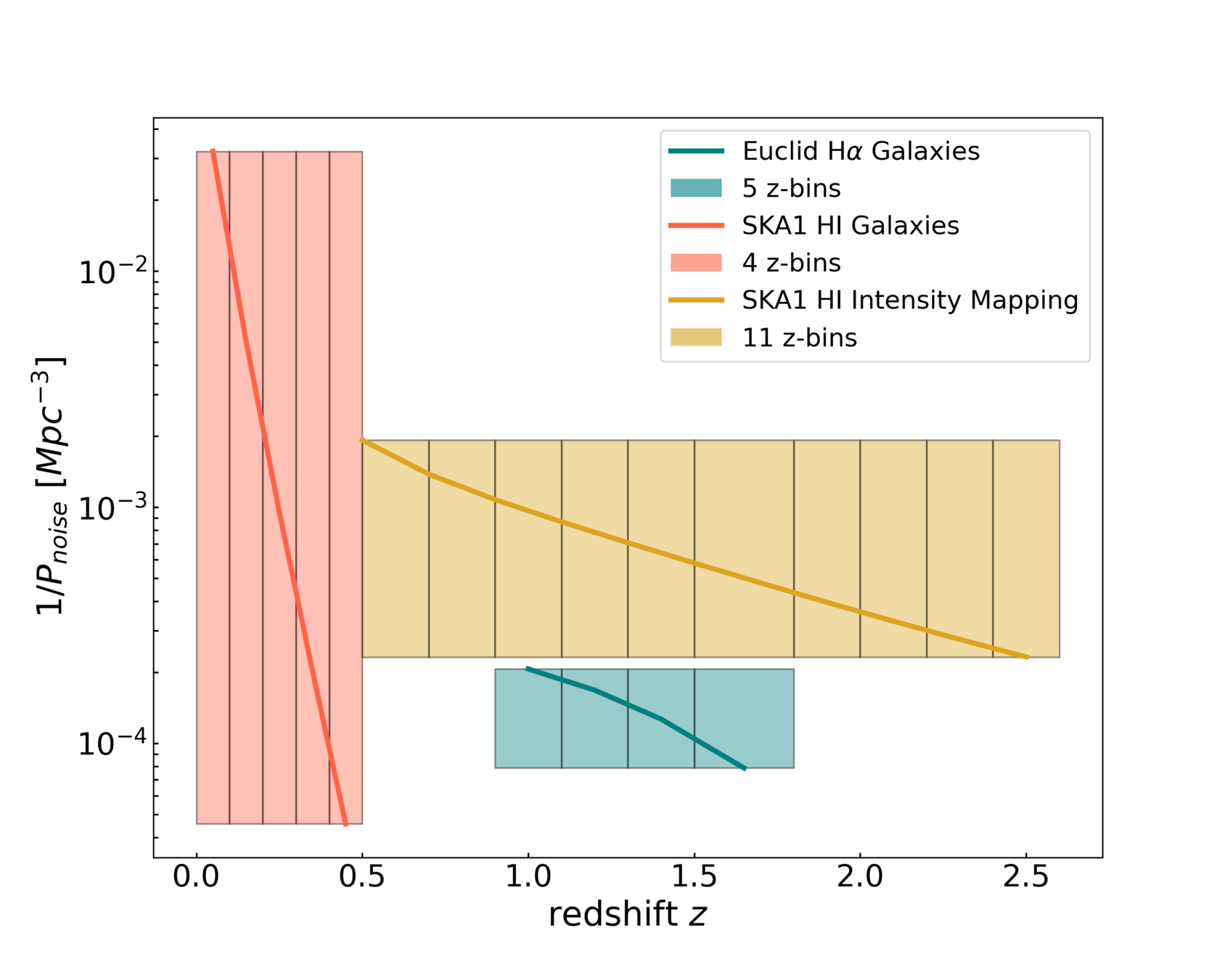
Vera Rubin LSST
Text
The Square Kilometer Array (SKA)
SKA Probes
SKA Surveys
Galaxy Clustering - IM Synergies

Casas, Martinelli, Pettorino, Carucci, Camera (in preparation)
f(R) Hu-Sawicki model
Text
Modification of the Einstein-Hilbert action
Induces changes in the gravitational potentials *
*for negligible matter anisotropic stress
Scale-dependent growth of matter perturbations
Small changes in lensing potential
Free parameter: \(f_{R0}\)
Hu, Sawicki (2007)
"Fifth-force" scale for cosmological densities
\(\lambda_C =32 \rm{Mpc}\sqrt{|f_{R0}|/10^{-4}}\)
Euclid: Casas et al (2022) in preparation
f(R) Hu-Sawicki model
Text
Euclid: Casas et al (2022) in preparation

Codes used: for background and scale-dependent linear perturbations: MGCAMB and EFTCAMB

For non-linear power spectrum:
Winther et al (2019) fitting formula

f(R) Hu-Sawicki model
Text
Euclid: Casas et al (2022) in preparation


\(\sigma_{\log f_{R0}}=0.05\) (0.9%)
Full probe combination, optimistic Euclid constraints:
\(f_{R0}=(5.0^{+ 0.58}_{-0.52} \times 10^{-6})\)

Paper also contains impact of:
- Non-linear scales
- Cross-correlations
- Pessimistic settings
- LCDM-limit
f(R) Hu-Sawicki model
Text
Euclid: Casas et al (2022) in preparation

N-body simulations for Dark Energy

f(R) Hu-Sawicki model and degeneracies

- Degeneracy:
- Suppression from neutrinos
- Enhancement from fifth-force (modified G)
- Degeneracies can be broke by looking at non-gaussian terms beyond the Pk
More exotic models

More exotic models

The problem of non-linearities

- Euclid Likelihood Code: CLOE
- Baryonic physics
- N-body simulations
- Non-linear power spectrum
- Strong parameter biases
The problem of non-linearities
- Euclid Likelihood Code: CLOE
- Baryonic physics
- N-body simulations
- Non-linear power spectrum
- Strong parameter biases


Text

Text
Conclusiones
- Euclid va a proveer una cantidad de datos sin precedentes en la cosmología.
- Gracias a sus imágenes detalladas y la determinación de distancias y posiciones, podemos hacer un mapa 4D del Universo (espacio y tiempo).
- Los neutrinos tienen importantes efectos en los observables cosmológicos
- Aún muchas teorías de gravedad modificada son compatibles con los datos
- Muchos challenges en el modelaje no-linear
Muchas Gracias!!